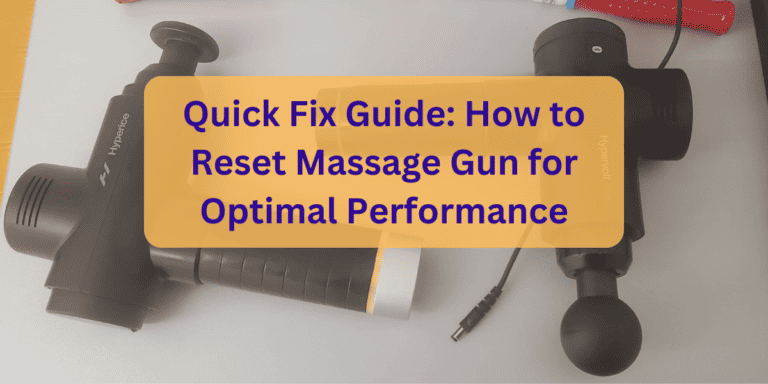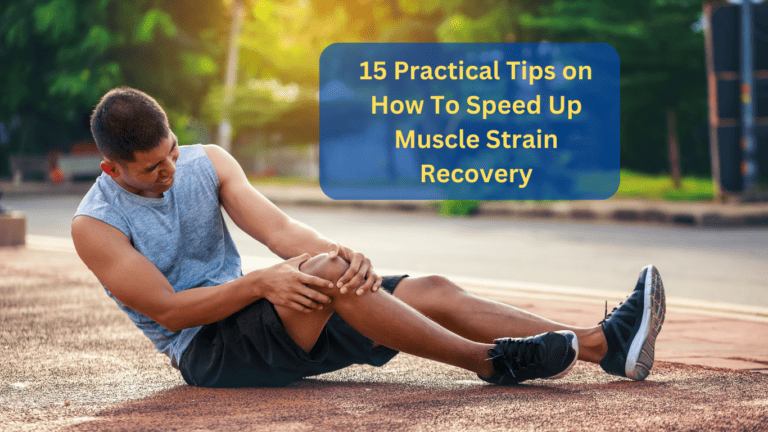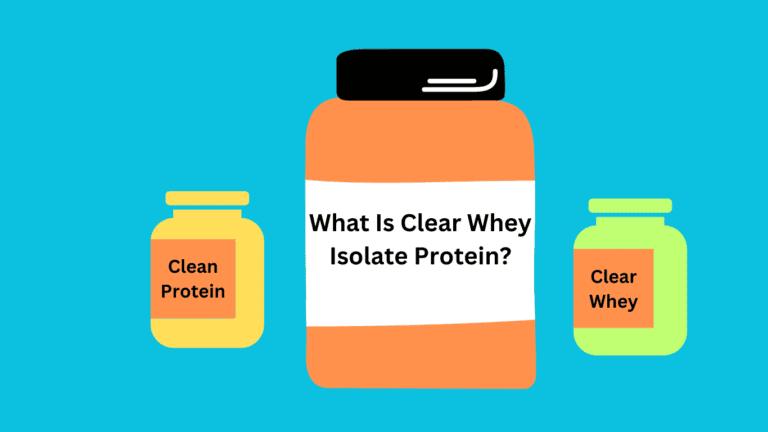25 Proven Muscle Recovery Tips After A Workout
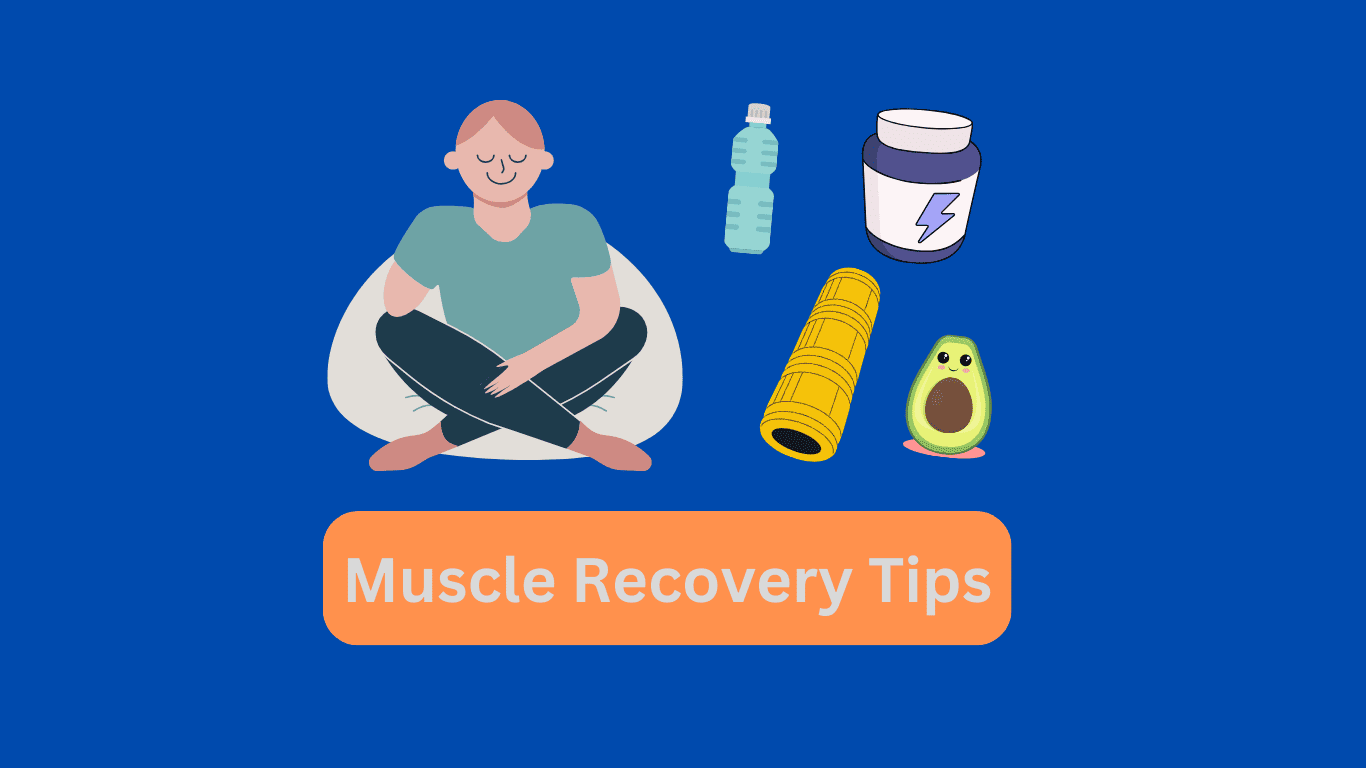
As a chiropractor, many of my competitive athletes or weekend warriors (someone who is not athletic fit, but does intense training on the weekend) want to find out how can they recover faster.
I would tell them if they want to recover faster, come see me every day for the rest of the week.
Unfortunately, that’s not what you’re here to read.
What you expect from this post is the following:
- 25 Tips to Recovery faster after an intense workout
- Hydration and Nutrition Tips
- Lifestyle Factors That Impact Recovery Time
- Tools and Therapies to Accelerate Healing
- When to Seek Professional Help
Following these 25 tips, you can reduce muscle soreness faster, and get back in the gym or on the field faster.
Let’s dive in!
What Is the Muscle Recovery Period?
The average time it needs for your muscle fiber to recover is 42 to 72 hours.
But this time can be extended depending on the intensity of the exercise or shortening with static stretching.
Disclaimer: The information provided in this blog post is for educational and informational purposes only and should not be construed as medical advice or a substitute for professional medical guidance, diagnosis, or treatment. Always consult a qualified healthcare professional before starting any exercise program or changing your current routine. The author and publisher of this blog post are not responsible for any adverse effects, injuries, or consequences resulting from using or misusing the information provided. The reader assumes full responsibility for any actions taken based on the information presented in this blog post.
Why Do Your Muscles Ache, and What Cause Muscle Soreness?
There is also a myth about lactic acid causing delayed onset muscle soreness.
But it is not true.
What is true is your muscles go through a process of micro-tearing (in which your muscles ripe and heal during the intense workout), and soreness and aches are produced by the process.
Your muscle needs to go through this process to grow bigger and stronger.
In other words, muscle soreness is a sign you gave your muscles a good challenge, excessive or prolonged soreness can impact your ability to exercise consistently and maximize your workout results.
Continue below to learn how you can reduce sore muscles.
27 Tips to Improve Muscle Recovery Process
1. Stay hydrated
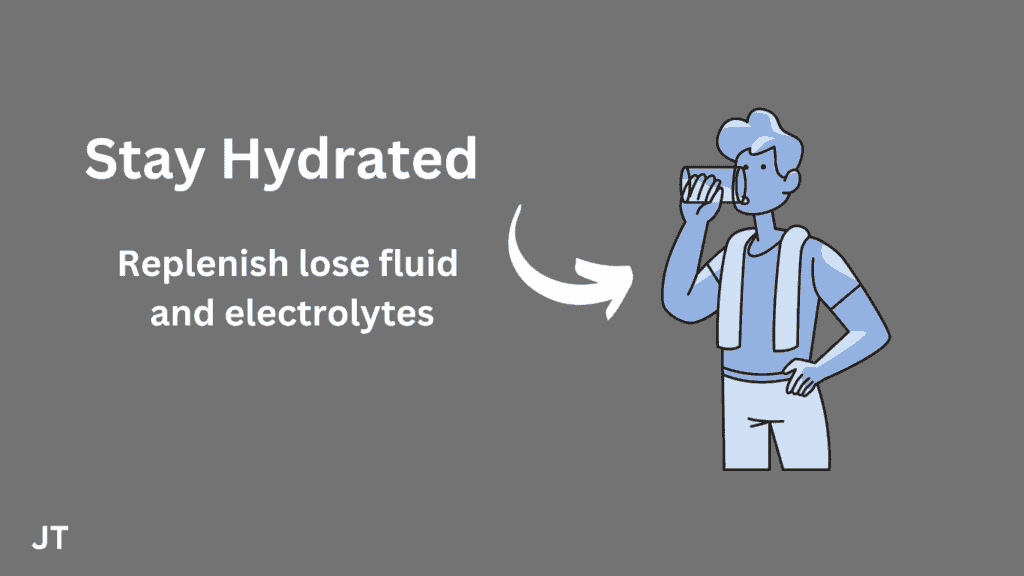
When you exercise, you sweat and lose fluid and electrolytes. This causes dehydration which impairs nutrient delivery, waste removal, and overall muscle recovery.
So the first tip on our list to speed up muscle recovery is hydration.
Proper hydration is key for reducing sore muscles and aiding workout recovery.
Staying hydrated with water or electrolyte drinks can replenish the lost fluid and electrolyte in your body.
2. Take Post workouts
The benefits of post-workout meal or supplement has a huge in reducing muscle soreness and muscle tissue repair.
Most post-workout leal or supplements contain protein, carbs, antioxidants, and healthy fats.
Protein provides the amino acids that are the building blocks for repairing the microtears in your muscle fibers caused by resistance training.
Here are some great post-workout nutrition you can try today: protein smoothies with fruit, Greek yogurt with berries, eggs, and avocado on toast, or grilled salmon with sweet potato.
If you’re crunching in time, try the latest clear whey protein drink that is packed with nutrients, but without the bad aftertaste of traditional whey protein drink.
Properly refueling after each workout accelerates the recovery process and muscle growth so you bounce back faster.
3. Don’t Forget Your Warm-up
I can’t stress enough how important warm-up or dynamic stretching is for your body.
Not only does it increase your heart rate, blood flow, and body temperate, but it activates your muscles and prepares them for upcoming training activities.
Many injuries I see in my clinic occur when they rush to exercise without a proper warm-up.
Make sure to dedicate 5-10 minutes to warm up before strength training, HIIT, cardio, or weightlifting sessions.
4. Take an Ice bath
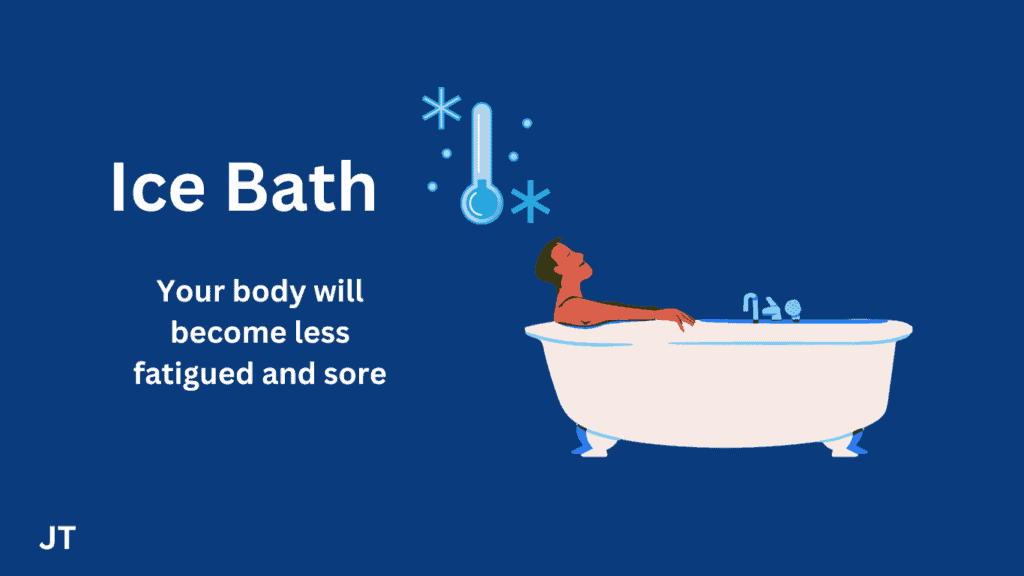
The benefits of taking an ice bath helps reduce inflammation and swelling from intense training.
Submerging your body into the cold water will help your cells flush out lactic acid and metabolic waste products.
Your body will become less fatigued and sore.
You can try the nice ice plunge tub that is designed for home use.
5. Stretch Daily
Based on a study, consistent stretching is a simple yet effective way to speed up post-workout recovery and decrease soreness.
When you strength train or play sports, your muscles shorten and tense up.
Holding stretched positions counteracts this by elongating the muscle fibers. Stretching increases blood flow and nutrient supply to your muscles which enhances repair.
You need to be consistent with your stretching to get the benefits of muscle recovery.
What I mean is that stretching once a week for 30 minutes while you exercise six times a week is not enough.
I always tell my patient to start by stretching 3x weekly for a maximum of 5-10 minutes.
Do the stretch while you’re watching YouTube shorts or Instagram. 5 minutes will go by very fast and also take your mind away from the pain.
Make sure you don’t overstretch because it will lead to more micro-tearing of the muscle.
6. Perform Active recovery
Active recovery involves doing light exercise on your rest days to pump blood and nutrients through your muscles.
This helps accelerate the repair of muscle tissue damaged from intense training.
Active recovery sessions should be low-intensity with about 40-60% of your maximum heart rate. Some great workouts include easy cycling, swimming, walking on a treadmill, yoga, tai chi, and light resistance training.
7. Massage Gun Treatment
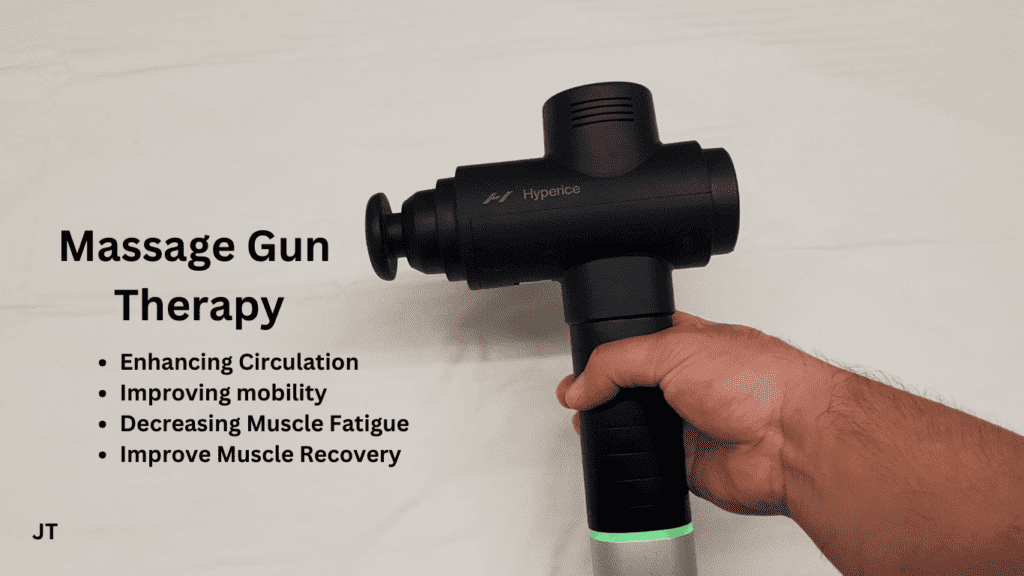
Using a massage gun is an increasingly popular way to assist with muscle recovery after intense training sessions.
Massage guns like Theragun use targeted vibration therapy to increase blood flow and reduce soreness.
The rapid pulsations help relax tight muscles, break up lactic acid, and soothe aches and pains.
Whether you’re using a budget or expensive massage gun, the goal is to help muscles recover faster by enhancing circulation, improving mobility, and decreasing muscle fatigue.
Use your massage gun after workouts and on rest days when your body needs it most.
This recovery tool can get your muscles feeling fresh faster so you can maintain your ideal training frequency and intensity.
8. Muscle Scrapping Therapy
Muscle scraping is an emerging muscle recovery technique that uses handheld tools to literally “scrape” the skin’s surface.
This is one of my favorite treatments I offer for my patients, but I have to warn you before you try out this treatment. It may cause soreness and bruising the following day.
The scraping technique helps flush out metabolic waste and enhances the supply of oxygen and nutrients to muscle tissues.
Specialized tools like IASTM (instrument-assisted soft tissue mobilization) scrapers and Gua sha stones can be used to apply light pressure while stroking the skin.
Scraping may cause some redness or micro-bruising which is normal. Research indicates scraping decreases pain from DOMS and improves range of motion better than massage alone.
Make sure you talk to your healthcare provider, physical therapist, or chiropractor before using this treatment at home.
9. Cupping
Cupping therapy is an ancient recovery technique that uses suction tension on the skin to improve blood flow.
By placing specialized cups on the skin and creating a vacuum by suctioning out the air.
This draws blood flow to the area to reduce swelling and flush out toxins.
Traditional cupping use alcohol and fire to create sucking for cupping therapy.
But you don’t need that anymore with new smart cupping. It is made easy to use with a press of a button.
10. Use Compression Boot
Compression boots like Normatec I use in my office a popular with competitive athletes.
The purpose of the compression boots improve circulation in your legs and speed up muscle recovery.
The boots are worn on your calves or feet, and they use a gentle pneumatic pumping action to squeeze your leg muscles.
This technique helps improve blood circulation to your limbs for better recovery.
Anyone can use compression boots but if you have a boot fracture, acute injury, or blood clot disorder (such as deep vein thrombosis) consult with your health care provider before using compression boots.
11. Listen to your body
Your body is your best friend. Learn to listen to the signs your body tells you so you can decrease muscle soreness and prevent injury.
For example, when I first started doing a lunge walk with a 10 lb dumbbell on each side, I felt discomfort in my inner thigh muscles.
I ignored the pain and continued with the exercise, and I regret not listening to my body at that moment.
My inner thigh became so sore that I could barely walk.
So you need to pay attention to your body for signs like fatigue, soreness, sluggishness, or pain during your workout.
If you do, it’s not a bad idea to take a break from exercise. You may need to read for 1-2 days so you can sustain long-term fitness and performance goals.
12. Eat a balanced diet
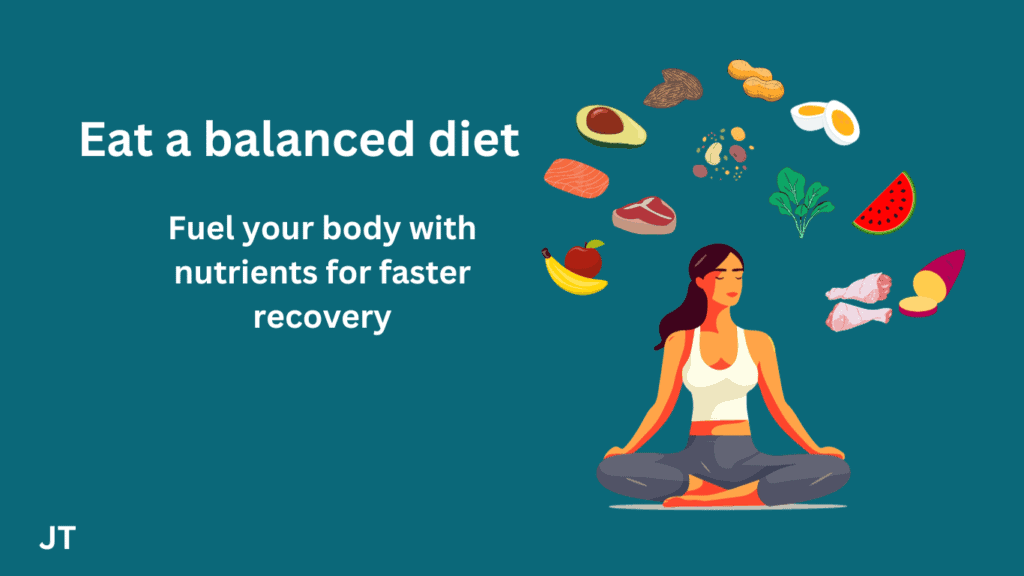
Your daily nutrition has a big impact on how quickly your muscles recover and adapt to exercise.
Eating food with optimal protein along with complex carbs, healthy fats, and micronutrients will feed the nutrient your body needs for fast recovery.
Aim for 0.5-0.8 grams per pound of body weight spread throughout the day.
Include carbs like whole grains, fruits, veggies, and limited processed carbs.
Healthy fats from nuts, seeds, avocado, olive oil, and fatty fish promote anti-inflammatory effects to aid muscle recovery.
Fuel your body with protein, carbs, and fats at each meal plus snacks as needed.
That means you can’t have McDonalds after your workout.
13. See a Physical Therapist or Chiropractor
If you experience persistent muscle, and joint pain, or sharp pain when you move, consider being evaluated by a physical therapist or chiropractor.
You don’t want to continue exercising with injured muscles because you are at risk for further injury.
PT and Chiro can evaluate your continue and provide the best plan for the health of your muscle.
Don’t hesitate to seek professional help if pain persists for more than 2 weeks or severely limits your activity.
14. Protein Powder
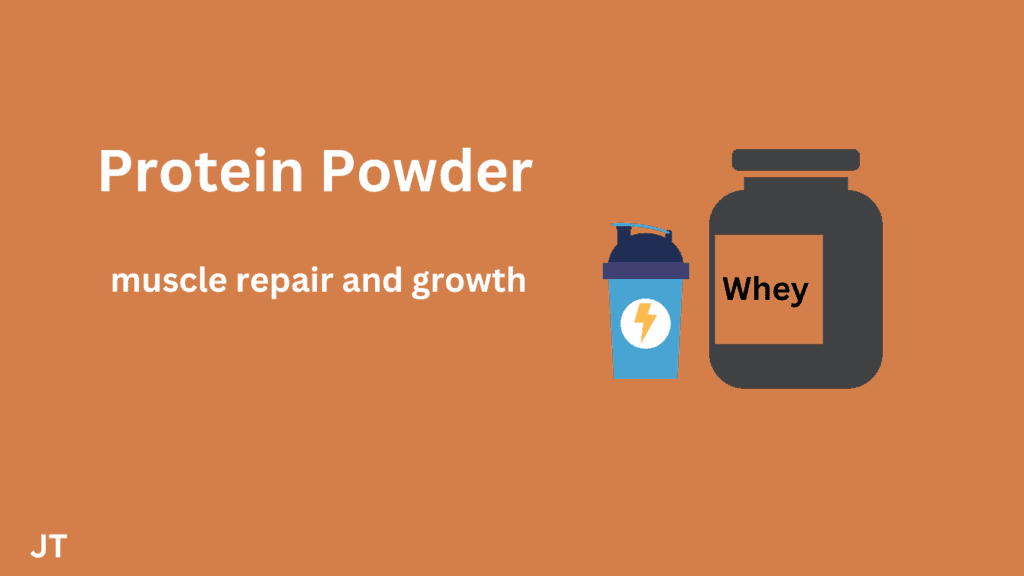
Taking protein powder supplements can optimize muscle recovery, especially after intense training sessions.
Whey, casein, clear whey, and plant-based protein powders provide high-quality protein sources that digest and absorb quickly.
Opt for whey protein isolate post-workout to deliver amino acids for muscle repair and growth.
You can also use powders conveniently in smoothies, pancakes, or overnight oats.
While whole foods should be your priority, supplements offer an easy way to ensure you meet your increased protein needs on heavy training days.
Just don’t over-rely on powders at the expense of real food nutrition.
15. Sleep
Getting adequate, high-quality sleep is essential for proper muscle recovery and workout performance.
During sleep, your body releases important hormones like testosterone and growth hormone that repair damaged muscle tissue and stimulate growth.
Sleep deprivation hampers protein synthesis rates and reduces glycogen replenishment in muscles.
Aim for 7-9 hours per night as recommended based on your age and activity levels
16. Heat Therapy
Applying heat to sore muscles is a great way to improve blood circulation, and decrease pain.
Simply taking a hot shower after an intense workout is the best way to do heat therapy.
You can also use a sauna blanket or light therapy may be more convenient for home use.
The way heat therapy works is by improving blood flow, which will enhance nutrient delivery to your muscles.
Apply for 10-15 minutes to relax tight muscles. However, avoid direct heat for the first 48 hours after an injury to prevent excess inflammation.
17. Use a Foam Roller
Foam rolling is a self-myofascial release technique that helps muscles recover faster between workouts.
These textured foam cylinders apply pressure to soft tissue to break up adhesions and scar tissue.
Rolling stretches muscles and increases blood flow to deliver nutrients while removing lactic acid buildup.
Using a foam roller before your workout functions as a warm-up by improving mobility.
Foam rolling after training provides massage to facilitate the repair of micro-tears.
Like any massage gun, or stretching, you need to be consistent with foam rolling exercises to get the maximum benefits.
18. Avoid Alcohol
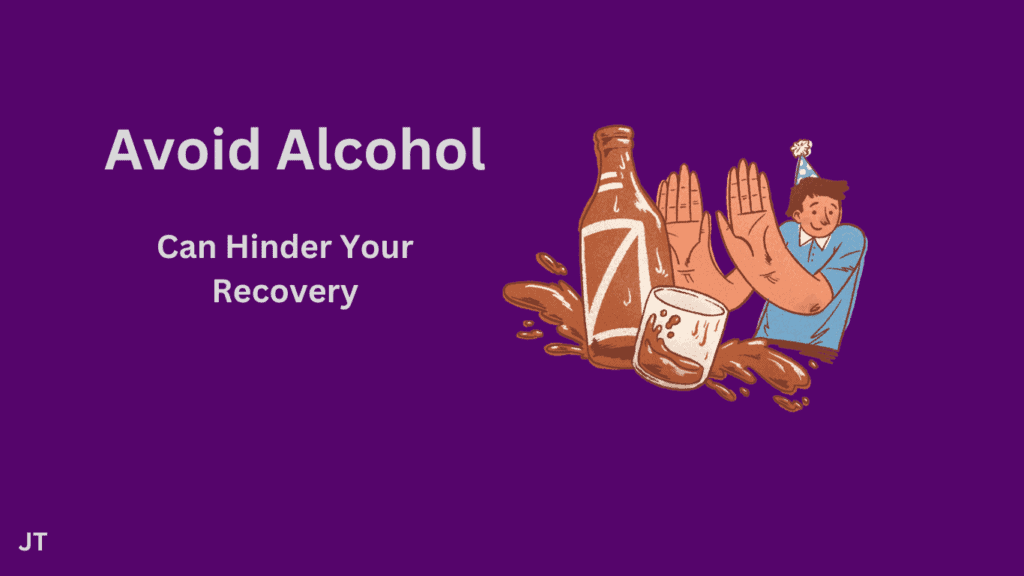
While having a drink or two occasionally is fine, it’s best to avoid alcohol consumption immediately after intense training sessions and during heavy training periods.
Alcohol can hinder muscle protein synthesis rates crucial for recovery and growth.
It also leads to dehydration which impairs performance and increases soreness.
19. Reduce stress levels
Managing stress is key for both workout performance and optimal muscle recovery.
When you’re under chronic stress, your body produces higher levels of inflammatory hormones like cortisol. And cortisol delays muscle growth and recovery.
Stress also elevates free radicals leading to oxidative damage of muscle tissue.
Aim to keep physical and emotional stress in check through relaxation techniques like meditation, deep breathing, nature exposure, and yoga.
20. Epsom salt bath
Epsom salt baths can help with muscle recovery after intense exercise.
To use this method, put 2 cups of Epsom salt bath into lukewarm water in the bathtub.
You can add essential oils along with your Epsom salt bath for better relaxation of your body.
21. Proper Rest
While active recovery has benefits, your body also needs adequate rest to fully recuperate between challenging workouts.
Muscle fibers do not grow during exercise itself. The actual muscle building and strengthening occurs during rest periods when protein synthesis is upregulated.
Without proper rest, your body cannot adapt appropriately to training stress.
Make sure to take at least 1 full rest day between intense strength training sessions targeting the same muscle groups.
22. Muscle Stimulator
Electrical muscle stimulation (EMS) devices can help accelerate muscle recovery when used properly.
Sometimes the muscle is hyperactive from the spasm or overtrain, more massage may cause the muscle to tense up more.
So I like to use muscle stim for acute pain, or muscle spasms to relax the muscle down.
This enhances blood flow to improve nutrient delivery and waste removal from muscle tissue. EMS also helps reduce swelling and muscle spasms.
23. Tart Cherry Juice
Tart cherry juice contains powerful antioxidants and compounds that make it an effective post-workout recovery drink.
Tart cherries are rich in anthocyanins and other flavonoids that have strong anti-inflammatory effects. Research shows tart cherry juice reduces muscle damage and speeds recovery after intense exercise.
24. Take Protein in the morning
Consuming protein in the morning, especially after an overnight fast, is important for muscle recovery and growth.
While you sleep, your body is breaking down muscle tissue through a catabolic process.
Upon waking, your muscles need the important amino acids from the protein to repair and rebuild damaged muscle fibers.
So treat yourself nicely with a protein-rich breakfast to help with the recovery period.
Aim for at least 20-30 grams of high-quality protein.
25. Plan Your Workout
Plan your workout so you will not over-train an area of your body.
Bottom Line
The key factor in recovering fast after an intense workout is learning to listen to your body.
Your body is your best friend and is there to keep you out of injury.
If you feel sluggish, sore, and you feel fatigued, then it is time for rest days.
Never work out when you feel fatigued because your chance of injury is very high.
I hope the recovery tips above can help you get back to your workout faster.
Have fun on your recovery days, but if you’re not sure how to recover or your soreness worsens, seek your healthcare provider for the best consultation.
FAQ
What helps muscles recover faster?
There are many ways listed above that will help your muscles recover faster. But if I had to pick the top 3, that would be proper rest, hydration, and massage gun therapy.
How long do muscles actually take to recover?
The time it takes for your muscles to fully recover after exercise varies based on the intensity, duration, and type of training.
- 24-48 hours for moderate endurance exercises like jogging or cycling
- 48-72 hours of weightlifting or sprint workouts that cause microtears in muscle fibers
After an intense unaccustomed workout that leads to significant muscle damage and DOMS, complete recovery can take 5-7 days.
Factors like your fitness level, age, nutrition, and stress impact recovery duration as well. Allow a minimum of 2 full rest days between training the same major muscle groups to be safe.
What food helps muscle recovery?
You want to make sure you provide the best nutrition for your body so you can recover faster.
Make sure to have optimal protein, carbs, omega-3 fats, tart cherry juice, hydrating foods, vitamin/mineral-rich foods, and micronutrient-dense foods.
- meats
- eggs
- protein powder
- grains
- fruits
- beans
- starchy vegetable
- fish
- nuts and seeds
- tart cherry juice
- watermelon
- cucumber
- spinach
- avocado
- sweet potatoes



